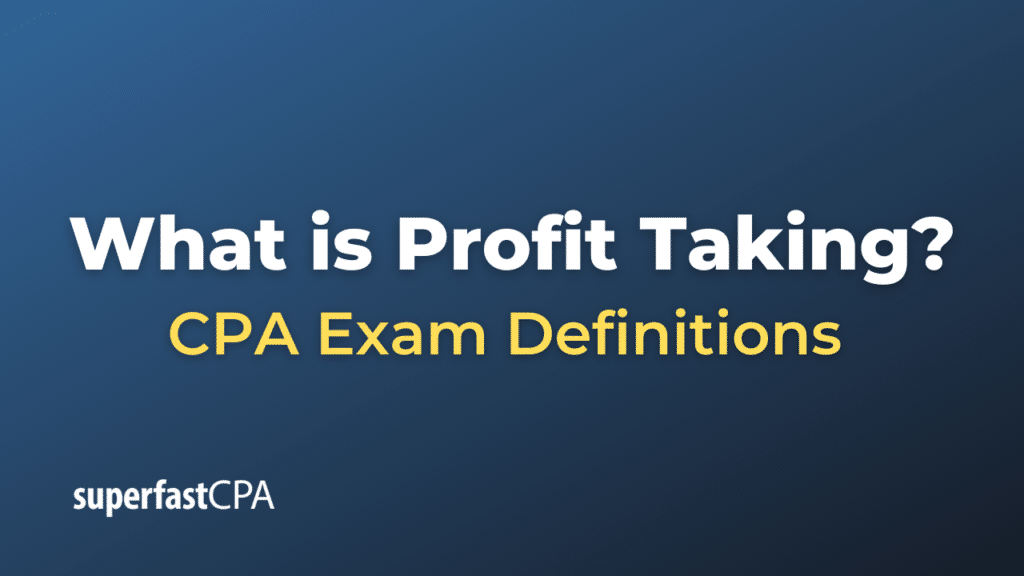Profit Taking
Profit taking is an action performed by traders or investors where they sell off their profitable investments to secure the profits they have made. This typically occurs after a rapid price increase, where the trader or investor decides to cash in on the gains rather than risk the prices falling again.
For example, let’s say an investor bought shares of a company at $10 each and over time, the price of the shares increased to $20 each. If the investor believes that the price has reached its peak, they might sell their shares at the current price to lock in their profit.
Profit taking can lead to a downward pressure on the price of a stock or other asset, as selling leads to an increase in supply in the market, which can cause the price to decrease. This is especially the case if many investors decide to take their profits at the same time.
Profit taking is a part of the normal operation of markets. It’s a strategy used by short-term traders and long-term investors alike to manage their risk and secure their gains. It’s important to note, however, that timing the market perfectly is very difficult, and selling an asset to take profit could mean missing out on further potential gains if the price continues to rise.
Example of Profit Taking
Let’s consider an example of profit taking in the stock market.
Imagine an investor named Alex who bought 100 shares of a tech company called “TechFuture Inc.” at $20 per share. Alex’s investment in TechFuture Inc. is therefore $2,000.
Over the course of a few months, TechFuture Inc. performs very well, and the share price rises to $50 per share. The value of Alex’s investment is now $5,000. Seeing this rapid increase, Alex believes that the price might have peaked, and so he decides to sell his shares.
By selling his 100 shares at $50 per share, Alex receives $5,000. His initial investment was $2,000, so he’s made a profit of $3,000.
This is an example of profit taking, where Alex sells his shares after a substantial increase in price to lock in his gains. Of course, if the price of TechFuture Inc.’s shares continues to rise after Alex sells, he might miss out on additional gains. However, if the price falls, Alex has avoided potential losses by taking his profit at the right time. That’s the risk-reward trade-off inherent in profit taking.













